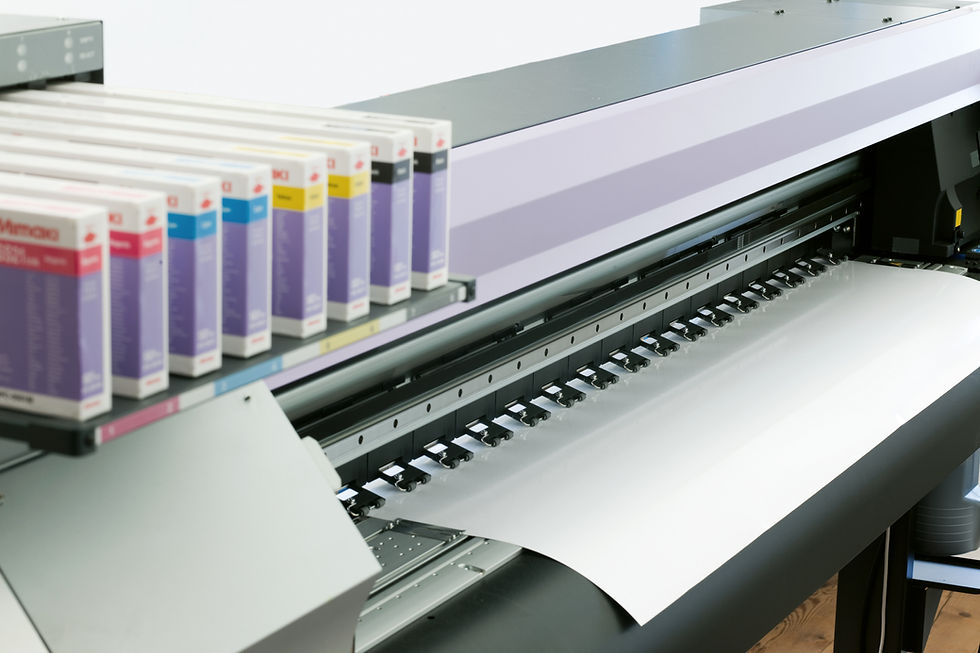All About Lithography
- Efficient Ink

- Aug 7, 2024
- 2 min read
The Origins of Lithography
Lithography, derived from the Greek words ‘lithos’ (meaning stone) and ‘graphein’ (meaning to write), emerged as a revolutionary method of printmaking. Its inception can be traced back to 1796 when Alois Senefelder, a German playwright and performer, first devised this technique1. At its core, lithography relies on the intriguing property that oil and water do not mix.
How Does it Work?
The Stone or Plate: In traditional lithography, the printing surface is either a smooth-surfaced stone (specifically lithographic limestone) or a metal plate. These materials provide an ideal canvas for the process.
Drawing with Grease: The image to be printed is drawn onto the stone or plate using a greasy substance—often oil, fat, or wax. This greasy layer acts as a protective barrier.
Chemical Treatment: The stone is then treated with a mixture of weak acid and gum arabic. This process, known as etching, renders the non-greased parts of the surface more hydrophilic (water-attracting).
Moistening the Stone: Before printing, the stone is moistened. Water adheres only to the gum-treated areas, making them even more oil-repellent.
Inking and Transfer: An oil-based ink is applied to the stone, adhering solely to the original drawing. When pressed against a blank paper sheet, the ink transfers, resulting in a printed page.
Evolution and Modern Lithography
Over time, lithography evolved. In modern commercial lithography, the image is transferred or created using a patterned polymer coating applied to a flexible plastic or metal plate. This process allows for greater flexibility and efficiency in large-scale printing.
Additionally, offset printing (or offset lithography) emerged as an elaboration of traditional lithography. Instead of direct contact between the plate and paper, offset printing employs a rubber plate or cylinder to transfer the ink. This innovation keeps the paper dry and enables high-speed, fully automated operation. Since the 1960s, most books, magazines, and color illustrations have been printed using offset lithography from photographically created metal plates.
The Legacy of Lithography
Lithography has left an indelible mark on art, communication, and industry. From fine art prints to mass-produced publications, its impact is far-reaching. Next time you admire a beautifully printed poster or flip through the pages of a glossy magazine, remember that the legacy of lithography lives on.




Comments